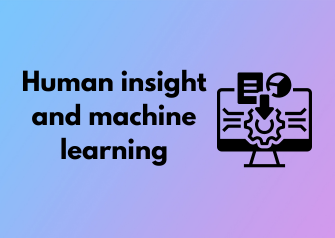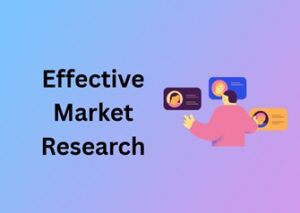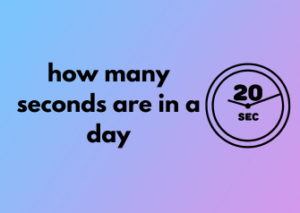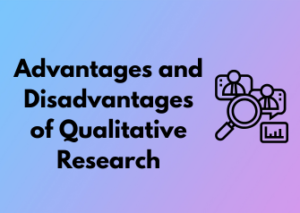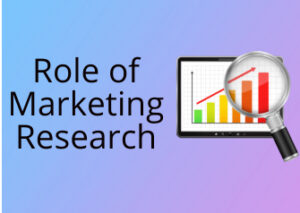When we talk about machine learning, it often feels like we’re entering a techy, sci-fi world where computers “know” things. But let’s hit pause for a moment—what gives these algorithms their power? Spoiler alert: It’s us, humans. Yep, behind every line of intricate code lies a spark of creativity, intuition, and problem-solving that only a human brain can ignite. Let’s explore how this synergy works and why human intuition is crucial to making machine learning not just functional, but brilliant.
The dance of instinct and logic. While machines excel at processing huge amounts of data, they lack a sense of context. Ever heard the phrase “trust your gut”? Human intuition is built on years of experience—sometimes subconscious—that helps us make snap judgments. This isn’t randomness; it’s our internal algorithm of interpreting patterns, forming ideas, and adapting to new situations. In the world of machine learning, intuition helps guide what data to prioritize, what patterns to look for, and what questions to even ask in the first place.
So, how does intuition shape machine learning?
Designing effective machine learning models often starts with asking the right “why” questions. For example:
- Why do we care about this particular problem?
- What kind of patterns seem intuitive in this dataset?
- What output is helpful (and meaningful) to stakeholders?
Data might tell a thousand stories, but human intuition helps decide which story is worth telling—and how to tell it.
Qualitative and Quantitative research: Read more
The art of feature engineering.
Ever wonder how machines “learn” better? A big piece of the puzzle is feature engineering, which essentially means highlighting the most important parts of the dataset for the model to chew on. Sure, the machine can process everything, but a human’s insight often picks out the subtle, nuanced details that matter most. For example:
- When analyzing customer behavior, intuition might highlight variables like purchase timing or social media activity over raw demographics.
- In medical research, a hunch from experts could surface unexpected correlations, such as linking lifestyle changes to early symptom patterns.
Think of it like picking out the “ingredients” for a recipe. Machines do the blending, but humans decide what’s worth tossing into the mix for the best outcome.
How Behavioral Patterns Teach Machines to Think
Have you ever wondered how machines like your voice assistant or a video streaming service seem to “know” your preferences? The truth is, they’re learning from you—quietly observing your behavior and using that to improve their predictions. In essence, artificial intelligence (AI) learns to “think” by analyzing and adapting to human behavioral patterns. Let’s take a closer look at how this process works!
Understanding the Basics of Machine Learning
At its core, machine learning is about feeding systems with data so they can identify patterns and make predictions. But it’s not just any data—behavioral data is particularly golden because it captures what we actually do, not just what we say. For example, if you binge-watch a specific genre of shows, this behavioral pattern tells an AI system, “Hey, this person enjoys mysteries!” The machine then uses this pattern to recommend more of what you love, sometimes even before you realize you want it.
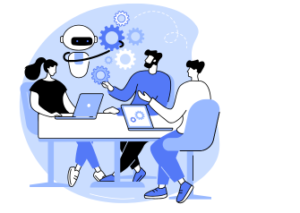
Teaching Machines to Mimic Our Choices
One of the incredible things about AI is its ability to adapt to dynamic human behavior. Here’s how behavioral patterns get embedded into machine learning systems:
- Collecting Data: It starts with gathering loads of information about actions people take. For example, think of the cookies stored on your browser or your purchasing history online.
- Finding Trends: Algorithms analyze your choices, grouping similar activities together. Ordered coffee from a specific brand every morning at 8 AM? There’s your pattern!
- Making Predictions: The more data collected, the better the AI “guesses” your next move. It can predict what you might buy, watch, or even search for.
It’s not magic, although it might feel like it sometimes—it’s precise engineering powered by your habits.
Machines Learn, But They’re Not Mind-Readers
Here’s an important thing to remember: machines learn based on historical behavioral data, but they can’t guess the why behind your actions. For example, you might spend time researching a product, but never actually buy it. The system might assume you’re interested and keep showing you related ads, though you’ve already made a decision not to purchase.
Machines may be great at spotting patterns, but interpreting intent or deeper emotional context? That’s still outside their wheelhouse (for now). It’s a friendly reminder that while AI is improving, humans remain irreplaceable in interpreting nuance.
What Does This Mean for the Average Person?
For you, this means a more personalized and seamless experience with technology. Whether it’s a shopping site that perfectly curates products for you or a smart home device that automates routines, AI is constantly working in the background to make life easier. But it also calls for awareness: the data you provide, even unintentionally, feeds into larger systems. It’s worth asking yourself occasionally, “Am I comfortable with what I’m sharing online?”
Pro Tips for a Balanced Interaction
As machines continue to learn, here are a few tips to be intentional about how behavioral patterns inform AI systems:
- Curate Your Data: Be mindful of what you share—control privacy settings and review permissions often.
- Experiment: It’s okay to mix things up. Teach AI to adapt to your evolving tastes by exploring new activities or interests.
- Leverage the Benefits: Take advantage of AI’s ability to make your life easier, like using personalized recommendations for productivity tools or wellness apps.
When Data Meets Decision: Human Oversight in Machine Predictions
At the heart of machine learning lies a simple yet profound truth: no matter how well machines analyze patterns or predict outcomes, they are still only mirrors of the data they’re trained on. And that’s where we, humans, step in as the much-needed safety net. Data doesn’t exist in a vacuum—it carries the weight of human biases, historical inequities, and sometimes, even noise. Human oversight ensures that machine predictions are accurate, ethical, and aligned with real-world needs.
The Limits of Machines Without Human Insight
Let’s be honest: machines are remarkable at crunching numbers, identifying correlations, and learning from historical patterns. But that’s just one part of the equation. Machines are not intuitive, empathetic, or even context-aware in the way humans are. They can’t tell the difference between coincidence and causation or measure the ethical implications of a decision. For example, imagine a machine learning algorithm that denies a loan because of historical data reflecting systemic discrimination. Without human oversight, this could invisibly perpetuate injustice.
This is where human judgment plays a vital role. When machines flag something as a high risk, humans must investigate: Is this truly a valid concern, or is there a deeper issue with the data that needs addressing?
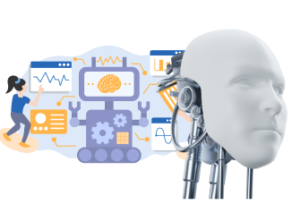
The Role of Humans in Validation
Even when predictions seem brilliant on paper, they must pass the reality test. Machine learning algorithms don’t inherently understand human nuance—they work on probabilities and patterns. Human oversight involves validating those predictions against real-world knowledge. Is the algorithm making logical predictions, or is it being swayed by irregularities in the data?
Take healthcare, for example. An AI might predict that a patient doesn’t need immediate attention based on their medical history. But a trained doctor could spot subtle symptoms or potential risks that the data didn’t capture. Together, the machine prediction and human expertise can save lives.
Key Areas Where Oversight Shines
Let’s break down some areas where human oversight can make all the difference:
- Bias Detection: Algorithms learn from historical data, and this can reinforce existing biases. Humans are essential for flagging and neutralizing these biases before making decisions.
- Moral Judgment: Machines can’t ethically weigh outcomes. Is it fair? Is it safe? Humans must make these calls.
- Interpretation of Outliers: Machines might discard or misinterpret anomalies. Humans can determine whether an outlier is a data error or a groundbreaking discovery.
Collaboration Leads to Smarter Outcomes
Think of machine predictions as a strong but incomplete puzzle. Human oversight provides the missing pieces, turning raw predictions into actionable insights. Machines might identify trends at a scale humans can’t, but it’s up to humans to add intuition, common sense, and ethical judgment to the mix.
In a world increasingly reliant on intelligent systems, involving human oversight isn’t just a nice-to-have—it’s a necessity. Together, machines and humans can balance precision with responsibility, driving decisions that not only work but also reflect our values as a society.
The Role of Ethics in Combining Human Judgment with AI
Artificial intelligence (AI) has the power to unlock incredible potential, whether it’s helping doctors diagnose diseases faster or predicting climate patterns with precision. But, with this power comes an equally important question: How do we make sure our use of AI is ethical? The combination of human judgment and AI isn’t just a technical partnership; it’s a moral one too. Let’s explore what this means and why it matters for everyone living in a world increasingly shaped by machines.
Why Ethics Matter in AI
Imagine this: a machine learning algorithm is used to screen job applicants for a company. Sounds great, right? It saves time and removes bias—or does it? If the training data contains biases (say, it reflects historical tendencies to favor certain groups), the algorithm could unintentionally reinforce discrimination. This is a stark reminder that human oversight is essential to ensure fairness and avoid harm.
Ethics in AI isn’t just about preventing bad outcomes; it’s about striving for good ones. AI has the potential to widen access to education, improve public health, and even tackle societal challenges. But without ethical considerations, we risk creating systems that could do just the opposite—amplify inequality, invade privacy, or erode trust.
How Human Judgment Guides Ethical AI
No matter how smart a machine gets, it still lacks humanity’s ability to interpret context and weigh moral dilemmas. That’s why pairing human oversight with AI systems is crucial. Here are three ways human judgment plays a key role in maintaining ethical AI:
- Defining what’s right: Machines don’t inherently understand human values. It’s up to people to establish ethical guidelines, like fairness, transparency, and accountability. For example, who decides which factors an algorithm should consider when making critical decisions, like granting loans or offering parole?
- Spotting hidden bias: Data often contains patterns inadvertently rooted in historical injustices. Humans can recognize these biases and help correct algorithms before they’re deployed.
- Acting as the moral checkpoint: Sometimes, an AI-designed solution might technically work but feel uncomfortable from a moral standpoint. For instance, should facial recognition technology ever be used in public spaces without consent? Humans can ask the “should we” questions machines never will.
Building Ethics into the Process
It’s one thing to agree AI must be ethical, but how do we make that happen in practice? The answer starts with designing AI systems thoughtfully and responsibly. Here are some actionable steps:
- Incorporate diverse perspectives: AI creators should include people from different genders, cultures, and industries. A variety of viewpoints can help reduce blind spots and prevent harmful stereotypes from sneaking into algorithms.
- Ensure transparency: Companies and developers need to explain how their AI systems work. Clear documentation allows for scrutiny, debate, and understanding of the decision-making process.
- Regulate and monitor: Governments and organizations must establish ethical guidelines and frameworks that regulate how AI is used—to protect individuals and society at large.
Remember, ethics isn’t an endpoint; it’s an ongoing conversation that evolves alongside the technology. The more humans stay involved in steering AI development, the better we can navigate this ever-shifting moral landscape.
Real-World Scenarios: Where Humans and Machines Collaborate
Let’s face it: the idea of humans working side-by-side with machines often feels like something straight out of science fiction. But guess what? It’s not the future anymore—it’s the present! Artificial intelligence (AI) and machine learning aren’t here to replace us; they’re here to help us. In fact, many real-world scenarios highlight how humans and machines can work together like the ultimate dream team.
1. Healthcare: Diagnosing with Precision
One of the most incredible ways humans and machines collaborate today is in healthcare. AI-powered tools analyze medical imaging at lightning speed, quickly identifying potential issues, from tumors to early signs of diseases. But does this mean machines alone can replace doctors? Not at all! Human doctors bring years of experience, critical thinking, and understanding of emotional context to the table.
Picture this: an AI model flags a suspicious spot in a patient’s lung scan. The radiologist, equipped with both the data and their own expertise, makes the final call on whether further tests are necessary. It’s a dynamic partnership where the machine provides rapid analysis, and a human ensures the result is accurate and practical.
2. Retail: Personalized Shopping Like Never Before
Ever wondered how Netflix knows exactly which series you’ll binge next or how your favorite online store recommends half your shopping cart before you even click? Machine learning is the answer, my friend! Algorithms dive into your past behavior—those late-night scrolls through the sale section, for instance—drawing up tailored recommendations.
However, behind this innovation lies a very human touch. Retail strategists and data scientists design these algorithms while considering cultural trends, ethics, and user satisfaction. Machines do the crunching, but humans refine the experience to make sure it doesn’t feel too…creepy.
3. Disaster Response: Saving Lives Faster
AI is making a major impact in disaster response efforts. Remember those harrowing images of floods, wildfires, or earthquakes streamed online? Algorithms process such images and satellite data to determine the most affected zones. Rescue teams can then prioritize resources and efforts where they are needed most.
But here’s where humans come in to save the day—quite literally. AI can estimate the damage or predict resource needs, but it’s the human teams on the ground who make life-saving decisions, adapt to unforeseen challenges, and show compassion to victims.
4. Creative Projects: Machines as Co-Creators
AI isn’t just about logic and data—it’s dabbling in creativity, too! From composing music to generating incredible art, machines are helping humans push the boundaries of their imagination. Take AI writing tools, for example: they propose ideas or draft paragraphs, but it’s the writers who edit, rewrite, and add the soul. Machines assist by doing the heavy lifting, freeing human creators to focus on what they do best—making it meaningful.
Why Collaboration Beats Competition
The real magic happens when we stop seeing machines as rivals and start embracing them as collaborators. Sure, machines are fast, consistent, and great with data. But humans? We’re empathetic, innovative, and brilliant at thinking outside the box. Together, we balance each other’s strengths and limitations.
Why Emotional Context Still Needs Human Expertise
Let’s face it, machines are amazing. They can crunch numbers faster than we ever could, analyze crazy amounts of data in seconds, and even mimic human-like conversations. But when it comes to understanding the subtleties of human emotion, machines are still a few steps behind—and that’s where we come in. Emotional context is complex, layered, and, well, deeply human. No matter how advanced machine learning gets, there are simply things it can’t grasp without a little help from human expertise.
So, why is emotional context such a big deal, and why does it still call for human insight? Let’s dive into it, shall we?
The Complexity of Human Emotion
For starters, emotions aren’t one size fits all. Think about sarcasm, for example. A simple “Oh, great” could mean genuine excitement… or complete frustration, depending on the tone or the situation. Machines might look at the words, apply what they’ve learned, and still misinterpret the context. Why? Because emotions can’t be boiled down to a set of rules or patterns; they depend on nuanced factors like tone, setting, culture, and individual personality quirks.
*Cue the entrance of human expertise.* Humans bring something machines can’t replicate: contextual understanding. We know how to read the room. We can tell when “I’m fine” means someone isn’t fine at all. Machines? They’d likely take that statement at face value unless guided by human insight.
Why Accuracy Matters in Emotional Context
Getting emotions wrong can have real-world consequences. Imagine customer service chatbots—programmed to assist based on machine learning and sentiment analysis. Without the right emotional context, these bots might completely misinterpret the emotional state of a frustrated customer. A bot responding with a cheerful “I hope you have a lovely day!” might seem tone-deaf to someone pouring their heart out about a bad experience.
This isn’t just about awkward customer interactions. Emotional missteps in healthcare, therapy apps, or even emergency services have the potential to do much more harm. Areas like these call for a symbiotic relationship: machines to process data efficiently and humans to provide the emotional intelligence needed to interpret the results with care and empathy.
How Humans and Machines Can Work Together
There’s no denying that machines have their strengths. For instance, AI can analyze patterns that humans might not catch, like detecting sadness in the words of a social media post or noticing shifts in someone’s behavior over time. But these findings mean little if they’re not handled with proper context—and that’s where human expertise truly shines. By combining machine insights with our own deep understanding of emotions, we create opportunities for more compassionate, effective outcomes.
- Example 1: A mental health app that flags possible signs of depression might benefit from a human therapist to interpret insights and deliver the appropriate support.
- Example 2: AI assistants in customer service could redirect particularly emotional cases to real humans who are better equipped to de-escalate the situation with empathy.
Fine-Tuning Machine Learning Through Lived Experience
Let’s talk about something fascinating—how lived experiences can help make machine learning better. Now, before your eyes glaze over, stick with me, because this is where the magic happens. Machines, for all their brilliance, often lack the nuance that comes from, well, simply being human. That’s where your unique perspective—the result of years of learning, adapting, and problem-solving—comes in.
Machines Are Fast Learners, But They’re Not Know-It-Alls
Machine learning systems are impressive. They can churn through millions of data points, spot patterns, and make predictions faster than any of us can. But here’s the thing—they don’t *really* understand the world as you and I do. Why? Because they lack context. They don’t know history, culture, or the subtle complexities that reveal themselves through life experience.
For example, let’s say a machine learning algorithm is tasked with identifying professional email tone. While it might do well recognizing keywords like “Dear” and “Thank you,” it won’t immediately grasp the difference between polite formality and passive-aggressive undertones (you know, like when someone writes, “Per my last email…”). You, armed with your lived experience, can step in and help refine these systems to interpret subtleties that the raw data cannot convey.
Teaching Through Lived Example
One of the coolest things about machine learning is that it can actually “learn” from real-world use. Take, for instance, how self-driving cars improve. These systems are exposed to billions of miles of driving simulations and real-life log data. But the critical step? Incorporating the real-world experiences of drivers—slamming the brakes for a jaywalking dog, adjusting for icy roads, or predicting that a ball rolling into the street means a child might follow. These are things machines won’t intuit on their own; they need human teachers to show them the ropes.
- **Healthcare machines** can be trained better by doctors sharing their bedside manner—helping systems detect symptoms *and* improve the patient experience.
- **Retail AI** learns customer service finesse from sales reps who know when someone is “just browsing” versus ready to buy.
- **Language models** improve greatly when humans provide creative phrasing or clarify idioms (like explaining what “spill the tea” actually means).
The Power of Feedback in Refinement
Your lived experience becomes essential in one of the most overlooked aspects of machine learning: feedback. Machines can only improve when they know what they did right or wrong. It’s like teaching a toddler—except this toddler happens to process feedback in nanoseconds. Feedback loops driven by human input help solidify good patterns and eliminate biases or errors in AI.
A great example? Chatbots. Many were clunky and awkward at first, but gradual refinements based on user interactions have made them smarter and more conversational. That’s because humans stepped in to share feedback—whether by flagging unhelpful responses or tweaking tone and language.
Shared Intelligence: The Future of AI
Ultimately, fine-tuning machine learning systems isn’t about machines replacing humans, but about combining strengths. We bring the lived experience that fills in the blanks machines just can’t fabricate. Together, we create something more adaptable, ethical, and, frankly, useful than either could manage alone.
So, the next time you hear about AI running the world, remember: its success depends on us—the people using our experiences to teach it how to be better.

